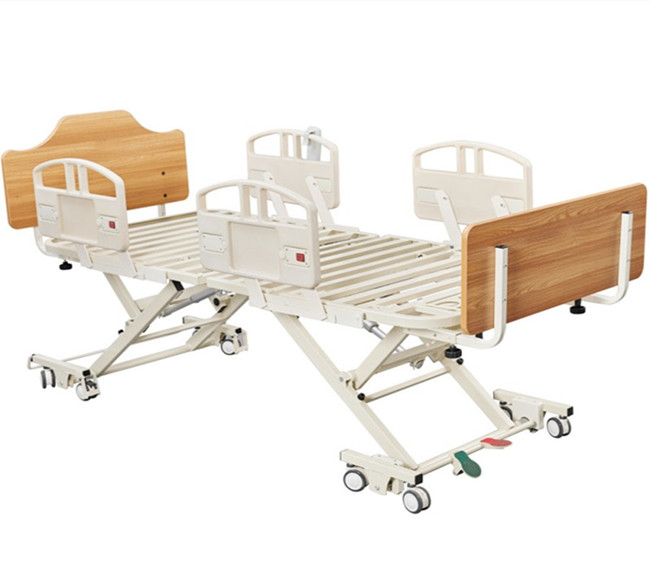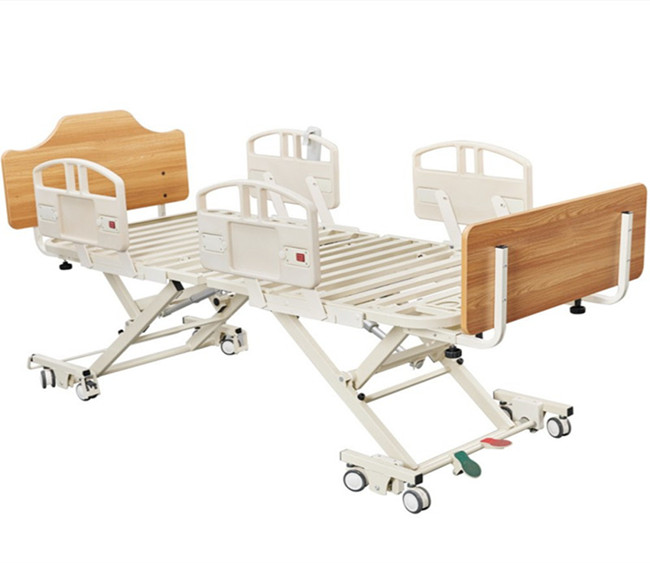what is the long-term care bed and why long-term care beds are increasingly popular in the US?

A long-term care bed is a specialized bed designed for individuals who require extended care and assistance with daily living activities, often found in nursing homes, assisted living facilities, or for home use. These beds offer features like adjustable height and positioning, fall prevention mechanisms, and support for caregivers.
Here's a more detailed breakdown:
Purpose:
Long-term care beds are designed for individuals who need assistance with mobility, daily tasks, and require support for extended periods due to illness, injury, or disability.
Features:
They often include features like:
Adjustable height: Allows for easier transfers and caregiver assistance.
Adjustable positioning: Enables patients to find comfortable positions for sitting, sleeping, and resting.
Fall prevention: Features like low bed height, bed exit systems, and sturdy construction help prevent falls and injuries.
Support for caregivers: Designed to make it easier for caregivers to provide care and assistance.
Common Locations:
These beds are commonly found in:
Nursing homes.
Assisted living facilities.
Rehabilitation centers.
Hospice care facilities.
At home for individuals needing long-term care.
Types of Beds:
There are various types of long-term care beds, including:
Standard long-term care beds: Basic features for comfort and ease of use.
Low beds: Designed for patients at risk of falls.
Bariatric beds: Designed for individuals with higher weight requirements.
Electric profiling beds: Offer electronic controls for adjustments.
Air-flow mattresses: Designed to prevent pressure sores.
 long-term care bed.jpg"/>
long-term care bed.jpg"/>
Why long-term care beds are increasingly popular in the US?
The growing popularity of long-term care beds, particularly for in-home use, in the US can be attributed to several factors:
Aging Population: The US population is steadily aging, with the number of Americans 65 and older projected to increase significantly in the coming decades. This demographic shift naturally leads to a higher demand for long-term care solutions, including specialized beds.
Desire to "Age in Place": A large majority of older adults express a preference to remain in their homes and communities as they age, a concept known as "aging in place". Long-term care beds with their features like adjustability and mobility support, make it easier for individuals to receive care and manage daily activities within their familiar home environment, helping them maintain independence.
Rising Prevalence of Chronic Conditions: Chronic diseases like heart disease, cancer, diabetes, and arthritis are widespread and on the rise in the US, with nearly 60% of adults living with at least one such condition. These conditions often necessitate ongoing care and support, making specialized beds essential for patient comfort, safety, and managing potential complications.
Benefits for Patients: Long-term care beds offer numerous benefits for patients, including:
Enhanced Comfort: Adjustable positioning, specialized mattresses, and pressure relief systems contribute to greater comfort, particularly for those who spend extended periods in bed.
Improved Mobility & Independence: Features like adjustable height, assist rails, and remote controls empower patients to adjust their position, get in and out of bed, and potentially move around with greater ease and less reliance on caregivers.
Reduced Risk of Complications: Adjustable positioning helps with circulation and breathing, while pressure redistribution systems mitigate the risk of bedsores.
Aiding Recovery: These beds can be instrumental in the recovery process following surgery or managing chronic conditions by providing appropriate support and enabling rehabilitation exercises.
Support for Caregivers: Long-term care beds also significantly benefit family and professional caregivers by:
Easing Caregiving Tasks: Features like adjustable height, simplified controls, and assist rails reduce the physical strain involved in patient transfers, repositioning, and providing personal care.
Improving Safety: Built-in safety features like side rails and alarm systems help prevent falls and injuries, providing caregivers with peace of mind.
Technological Advancements & Accessibility: Innovations in long-term care bed technology, including features like smart beds, automated systems, and user-friendly control interfaces, further enhance their appeal and usability for both patients and caregivers. Additionally, coverage by programs like Medicare and Medicaid for medically necessary home hospital beds makes them more accessible to individuals who require them.
In essence, the combination of an aging population, the strong desire to age in place, the growing prevalence of chronic conditions, and the tangible benefits these beds offer for both patients and caregivers are driving the increasing adoption of long-term care beds in the US.